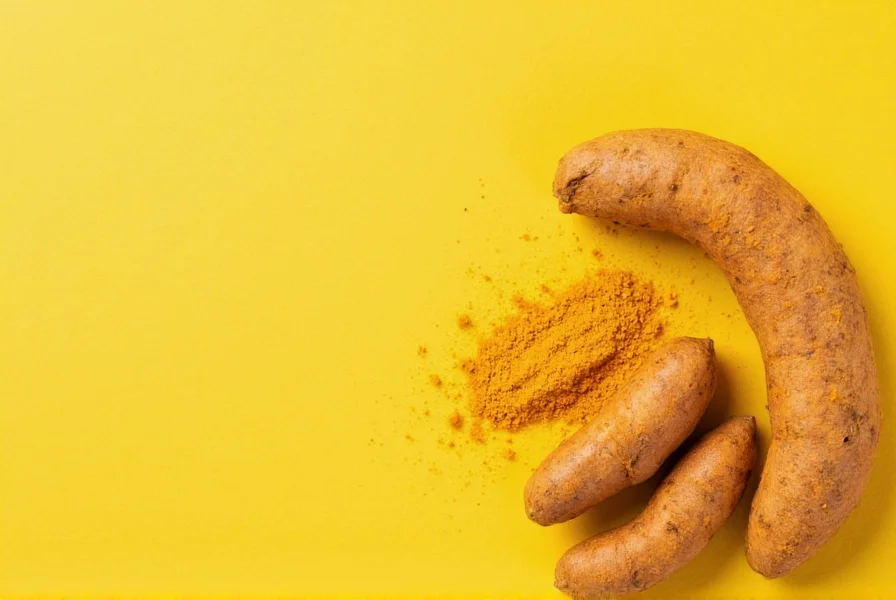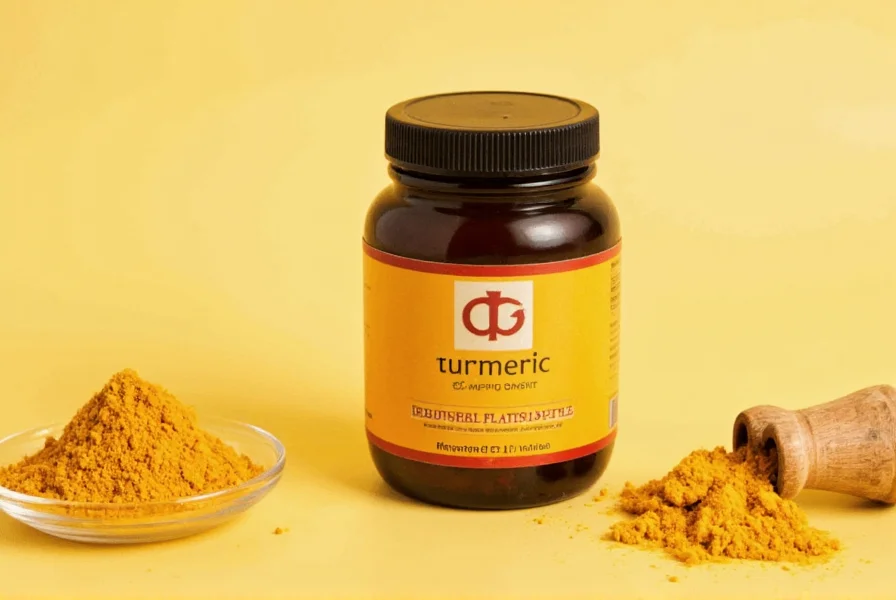When evaluating turmeric supplements, understanding the science behind curcumin—the active compound in turmeric—is essential. Turmeric root contains only about 2-8% curcuminoids, with curcumin being the most researched component. This explains why simply adding turmeric to food rarely delivers therapeutic benefits. The real challenge with curcumin is its notoriously poor bioavailability; without enhancement, your body absorbs less than 1% of standard curcumin.
Why Bioavailability Determines Effectiveness
Curcumin's low solubility in water and rapid metabolism make standard turmeric supplements largely ineffective. Research published in Food and Chemical Toxicology demonstrates that unenhanced curcumin has a half-life of just 30 minutes in the bloodstream. This explains why the best turmeric supplement for inflammation must incorporate one of several scientifically validated delivery systems:
- Piperine-enhanced (black pepper extract): Increases absorption by up to 2,000% according to a Planta Medica study
- Liposomal formulations: Encapsulates curcumin in fat molecules for better cellular uptake
- Nanoparticle technology: Reduces particle size for improved solubility
- Phospholipid complexes (like Meriva®): Binds curcumin to phospholipids for enhanced absorption
Key Factors in Choosing Quality Turmeric Supplements
When determining how to choose a quality turmeric supplement, consider these evidence-based criteria:
| Feature | Why It Matters | What to Look For |
|---|---|---|
| Curcumin concentration | Plain turmeric contains only 2-8% curcumin | Standardized extracts with 95% curcuminoids |
| Bioavailability enhancer | Unenhanced curcumin has less than 1% absorption | Piperine, liposomal, or phospholipid delivery |
| Third-party testing | Prevents adulteration and ensures label accuracy | USP, NSF, or ConsumerLab certification seals |
| Dosage per serving | Studies use 500-1,500mg of enhanced curcumin | Adequate dose without excessive pill count |
Scientific Evidence Behind Turmeric Benefits
A comprehensive review in the Journal of Medicinal Food analyzed 120 studies on curcumin, confirming its anti-inflammatory effects are comparable to some pharmaceuticals—but only when using bioavailable forms. For joint pain relief, research in the Journal of Alternative and Complementary Medicine showed that 400mg of enhanced curcumin daily reduced pain scores by 58% in osteoarthritis patients after eight weeks.
However, not all claims hold up to scientific scrutiny. While turmeric shows promise for inflammation and joint health, evidence for cognitive benefits remains preliminary. The most bioavailable turmeric supplement won't deliver benefits beyond what current research supports.

Safety and Quality Red Flags
When researching what to look for in a turmeric supplement, watch for these warning signs:
- "All-natural" claims without standardized extracts
- Products containing only turmeric root powder (not concentrated curcumin)
- "Proprietary blends" that hide ingredient amounts
- Exaggerated health claims ("cures arthritis" or "reverses Alzheimer's")
- Absence of third-party testing documentation
Turmeric supplements are generally safe but can interact with blood thinners and diabetes medications. Always consult your healthcare provider before starting any new supplement, especially if you have gallbladder issues or are pregnant.
Tailoring Your Choice to Specific Needs
The right turmeric supplement depends on your health goals:
- For inflammation: Look for 500-750mg of enhanced curcumin twice daily
- For joint health: Choose formulations with additional boswellia or ginger
- For general wellness: Lower doses (250-500mg) of quality curcumin may suffice
- For maximum absorption: Liposomal or nanoparticle formulations offer highest bioavailability
Remember that turmeric supplement dosage guidelines vary based on formulation. A product requiring 4 pills to deliver 500mg of enhanced curcumin may be less practical than one providing the same dose in a single capsule.
Evaluating Supplement Quality
When comparing third-party tested turmeric supplements, check for:
- Certification seals from independent labs (USP, NSF, ConsumerLab)
- Batch-specific test results available online
- Transparent ingredient listing with exact amounts
- Manufacturing in FDA-registered, GMP-certified facilities
A 2022 analysis by ConsumerLab found significant discrepancies between label claims and actual curcumin content in 30% of tested products. This underscores why verification through independent testing matters more than marketing claims.
Practical Buying Guide
Follow these steps to select the right turmeric supplement:
- Identify your primary health goal (inflammation, joint pain, general wellness)
- Verify the product contains standardized curcumin extract (95% curcuminoids)
- Confirm the presence of a proven bioavailability enhancer
- Check for third-party testing documentation
- Calculate cost per effective dose (not just per bottle)
- Start with a 30-day supply to assess tolerance before committing
Quality scientifically backed turmeric benefits require consistent daily use for 4-8 weeks before noticing effects. Don't expect immediate results, and discontinue use if you experience digestive discomfort.











 浙公网安备
33010002000092号
浙公网安备
33010002000092号 浙B2-20120091-4
浙B2-20120091-4